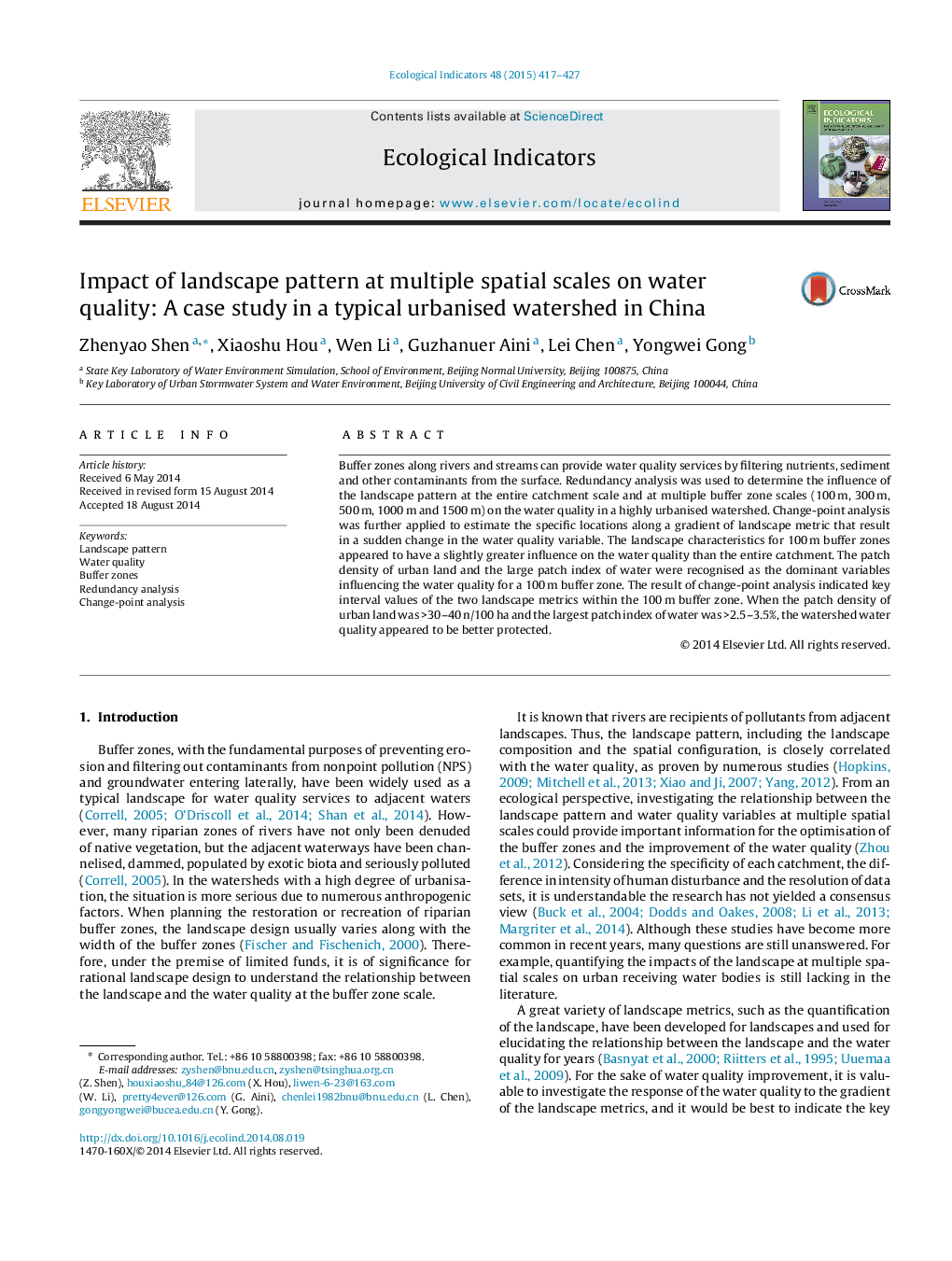| Article ID | Journal | Published Year | Pages | File Type |
|---|---|---|---|---|
| 6295055 | Ecological Indicators | 2015 | 11 Pages |
Abstract
Buffer zones along rivers and streams can provide water quality services by filtering nutrients, sediment and other contaminants from the surface. Redundancy analysis was used to determine the influence of the landscape pattern at the entire catchment scale and at multiple buffer zone scales (100Â m, 300Â m, 500Â m, 1000Â m and 1500Â m) on the water quality in a highly urbanised watershed. Change-point analysis was further applied to estimate the specific locations along a gradient of landscape metric that result in a sudden change in the water quality variable. The landscape characteristics for 100Â m buffer zones appeared to have a slightly greater influence on the water quality than the entire catchment. The patch density of urban land and the large patch index of water were recognised as the dominant variables influencing the water quality for a 100Â m buffer zone. The result of change-point analysis indicated key interval values of the two landscape metrics within the 100Â m buffer zone. When the patch density of urban land was >30-40Â n/100Â ha and the largest patch index of water was >2.5-3.5%, the watershed water quality appeared to be better protected.
Related Topics
Life Sciences
Agricultural and Biological Sciences
Ecology, Evolution, Behavior and Systematics
Authors
Zhenyao Shen, Xiaoshu Hou, Wen Li, Guzhanuer Aini, Lei Chen, Yongwei Gong,
